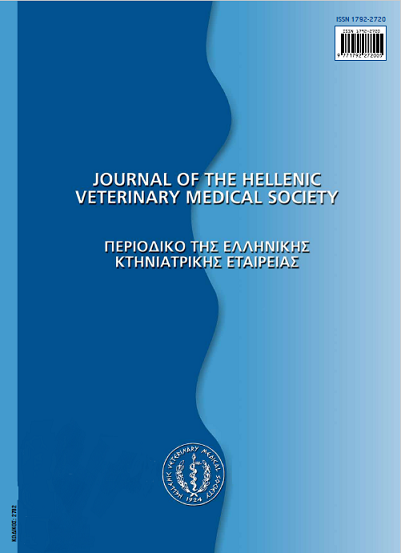Submandibular and parotid abscess due to Nocardia sp. and therapy with danofloxacin in sheep

Abstract
The aim of the present study was to report detection of Nocardia sp. from cutaneous lesions of sheep. Abscess material was collected from submandibular and parotid lesions in sheep for identification of Nocardia sp., which is well known as a causative agent for cutaneous or subcutaneous abscesses, disseminated disease, mastitis, and pneumonia. Nocardia sp. are Gram-positive, delicate, non-motile, branching filamentous bacteria that found in soil, dust, organic materials, water and aquatic environmental. Nocardia species generally yield a large variety of diseases in both normal and immunocompromised humans and animals. In the present study, bacterial staining methods and biochemical identification methods were applied for identification of Nocardia sp. in four sheep in Aydin. All cases had superficial abscesses in the submandibular and parotid region, mostly invading the head and neck regions. Neutrophilic leukocytosis was evident in three out of four sheep, and there was evidence of moderate anemia in two of the sheep. Samples were stained with Gram and modified Ziehl-Neelsen staining and streaked onto sheep blood agar, incubated at 37°C for 48-72 hours under aerobic condition, Sabouraud Dextrose Agar, incubated for one week under aerobic condition. Nocardia sp. was isolated from based on bacteriological investigation confirming numerous thin, Gram-positive, filamentous and nonacid fast organisms, and biochemical tests. Nocardia sp. strains were confirmed with 16s Rrna PCR method. Based on clinical appearance, hematological findings, and molecular analysis a definitive diagnosis cutaneousNocardiosis was made in the sheep. Initial therapy involving danofloxacin, with regard to antibiogram, for 10 days and local iodine solutions, resulted in clinical recovery on 35-45 days post-treatment. This is the first reported case of cutaneous Nocardiosis and its effective danofloxacin therapy in sheep in Turkey.
Article Details
- How to Cite
-
KIRKAN, S., URAL, K., PARIN, U., ORTLEK, O., BALIKCI, C., GULTEKIN, M., KARADEMIR, U., & AKIN, I. (2018). Submandibular and parotid abscess due to Nocardia sp. and therapy with danofloxacin in sheep. Journal of the Hellenic Veterinary Medical Society, 68(1), 21–26. https://doi.org/10.12681/jhvms.15552
- Issue
- Vol. 68 No. 1 (2017)
- Section
- Research Articles

This work is licensed under a Creative Commons Attribution-NonCommercial 4.0 International License.
Authors who publish with this journal agree to the following terms:
· Authors retain copyright and grant the journal right of first publication with the work simultaneously licensed under a Creative Commons Attribution Non-Commercial License that allows others to share the work with an acknowledgement of the work's authorship and initial publication in this journal.
· Authors are able to enter into separate, additional contractual arrangements for the non-exclusive distribution of the journal's published version of the work (e.g. post it to an institutional repository or publish it in a book), with an acknowledgement of its initial publication in this journal.
· Authors are permitted and encouraged to post their work online (preferably in institutional repositories or on their website) prior to and during the submission process, as it can lead to productive exchanges, as well as earlier and greater citation of published work.


